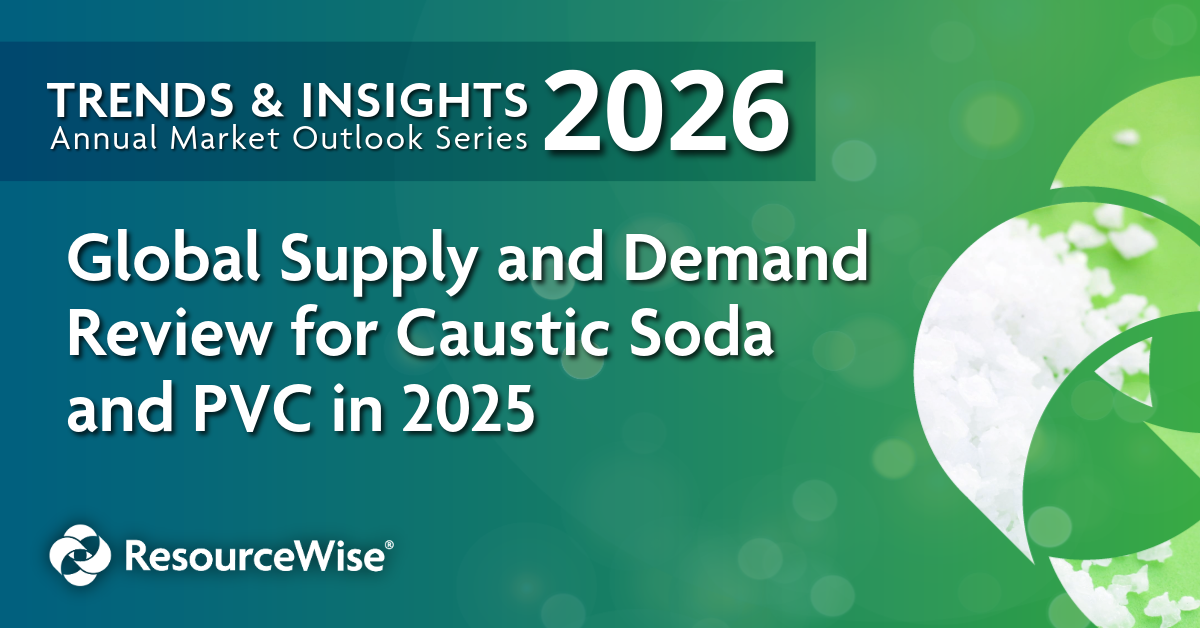3 min read
[Webinar Recap] European Plant Closures and Asian Overcapacity: Global Chemicals in Transition
ResourceWise
:
Sep 29, 2025 4:02:13 PM
![[Webinar Recap] European Plant Closures and Asian Overcapacity: Global Chemicals in Transition](https://www.resourcewise.com/hubfs/images-and-graphics/webinar-social-images/chemicals/ResourceWise%20Chemicals%20Q3%20Webinar%20From%20Closures%20to%20Overcapacity-4-CHEMICAL%20PRODUCTS%20SOCIAL%20SPEAKER%20HIGHLIGHT.png)
As the global chemicals sector navigates mounting pressures, two themes are at the forefront: European plant closures and Asian overcapacity. Ahead of the EPCA Annual Meeting, ResourceWise hosted a timely webinar featuring expert commentary from Jennifer Hawkins, Business Manager, and William Bann, Chief Editor. Moderated by Steve Wilkerson, Sales Director for the North American Chemicals Value Chain, the discussion provided a candid view into the forces reshaping competitiveness, trade flows, and sustainability opportunities across the chemical value chain.
Setting the Stage
Wilkerson opened the session by acknowledging the headwinds the industry faces:
“We've been experiencing significant turmoil in the market—from tariffs to rising costs. This is exactly the right moment to have this conversation.”
He introduced the agenda, which spanned five areas: market context and outlook, products and feedstock dynamics, trade policies, global uncertainties, and opportunities in sustainability.
Europe's Rationalization Challenge
The first theme tackled was Europe's wave of chemical plant closures. Hawkins explained that the issue goes far beyond cyclical demand weakness. She pointed out that closures are being driven by structural challenges, including energy prices, regulatory shifts, and the widening competitiveness gap with other regions. For some facilities, restarting operations simply isn't viable.

Bann added historical perspective, noting that Europe has long contended with smaller-scale, higher-cost production compared with Asia and the Middle East. What is different now is the intensity of global competition: unless structural costs are addressed, rationalization may accelerate rather than slow.
Asia's Expanding Capacity and the Crude-to-Chemicals Model
If Europe is contracting, Asia—particularly China—is expanding aggressively. Bann described the crude-to-chemicals model as one of the most disruptive forces in recent years. Overcapacity is not just about volumes; it is about integration and cost structure. China's crude-to-chemicals complexes are designed to absorb crude oil directly and convert it into petrochemicals at scale. That efficiency changes the economics for everyone else.
Hawkins reinforced the point, highlighting that the consequences are not confined to Asia. Expanded Asian output is competing in Europe and North America, tightening margins and placing additional pressure across the value chain.
Trade Policies and Geopolitical Risks
The conversation then turned to the trade environment, where tariffs and protectionist policies continue to reshape flows. Wilkerson noted that companies are facing a level of uncertainty that complicates planning decisions.
Bann elaborated on the U.S.–EU trade relationship, where shifting tariff regimes can upend supply economics overnight. Meanwhile, ongoing conflicts—from the war in Ukraine to broader geopolitical realignments—add further instability to energy and feedstock costs.
Hawkins emphasized that policy risk is now a central variable in strategy. It is no longer enough to model supply chains based only on demand and capacity; companies must factor in sudden trade barriers, carbon costs, and regulatory changes as part of the new normal.
Global Market Uncertainty: Beyond Supply and Demand
The panel also addressed the macro environment—from inflation and interest rates to election cycles in major economies. Bann reminded the audience that these factors interact with industry dynamics in complex ways: even if demand holds steady, financing conditions can derail investment. Political outcomes will continue to influence trade policy and carbon regulation.
Opportunities Amid the Turmoil
Despite the challenges, the panel pointed to areas of opportunity. Sustainability emerged as a unifying theme.
Hawkins emphasized that companies should view low-carbon investments as more than a compliance requirement. She stressed that those who innovate in circularity, recycling, and bio-based materials will position themselves for long-term advantage.
Bann agreed, noting that investor and customer expectations are shifting. Companies that succeed will be those able to link sustainability directly to competitiveness.
Wilkerson closed the opportunity discussion by underscoring the value of reliable market intelligence. He emphasized that data and insight allow companies to anticipate shifts rather than merely react to them.
Looking Ahead
The panel agreed that the coming year will be pivotal. European rationalization may accelerate as the energy-cost gap persists. Asian capacity will continue to rise, reshaping trade flows and pricing. Trade disputes and geopolitical risks remain wild cards.
Yet within this turbulence lies opportunity—especially for companies that innovate in sustainability and leverage intelligence to inform strategy.
Key Takeaways
-
Europe's chemical sector faces structural challenges. High energy costs and regulatory burdens are driving closures that are unlikely to reverse.
-
Asia's crude-to-chemicals model is disruptive. Integration and scale are creating a cost advantage that reshapes global trade.
-
Trade and geopolitics are central to competitiveness. Tariffs, wars, and policy shifts now directly influence margins and supply stability.
-
Market intelligence is essential. In a volatile environment, data-driven decisions separate leaders from laggards.
Final Thought
As Hawkins summarized, the question is not whether these pressures will continue—but how quickly the industry can adapt. For executives, producers, and buyers across the value chain, that adaptability will determine who thrives and who falters in a chemicals market undergoing profound transformation.





